- Get In Touch >
Instagram: kexin._.liu
Email: kexin.liu@network.rca.ac.uk
Instagram: kexin._.liu
Email: kexin.liu@network.rca.ac.uk
‘Focus, But Where?’ is a web-based hidden object game that playfully explores the intersection of climate change activism and our complex digital landscape. This project was born from the idea that addressing climate change not only requires radical changes in our natural environment but also transformation of the media landscape we inhabit.
Through the language of a hidden object game, we guide players through an investigation related issues: From how, under an attention economy, our mode of media consumption encourages activists to curate sensational content for maximum exposure, to how manipulative UX/UI designs crafted by tech companies contribute to echo chambers, polarization, and the spread of misinformation around environmental issues, to the influence of lobbyists on the climate change narrative we consume.
Currently, we have a completed script, 35% of the illustrations, and a basic open-sourced game development framework all available at Github. We highly recommend joining our email list to stay updated on future developments of our game!
In collaboration with Kai Charles, Inigo Hartas, Xingzhi (Gigi) Zheng, in Bristol, 2024.
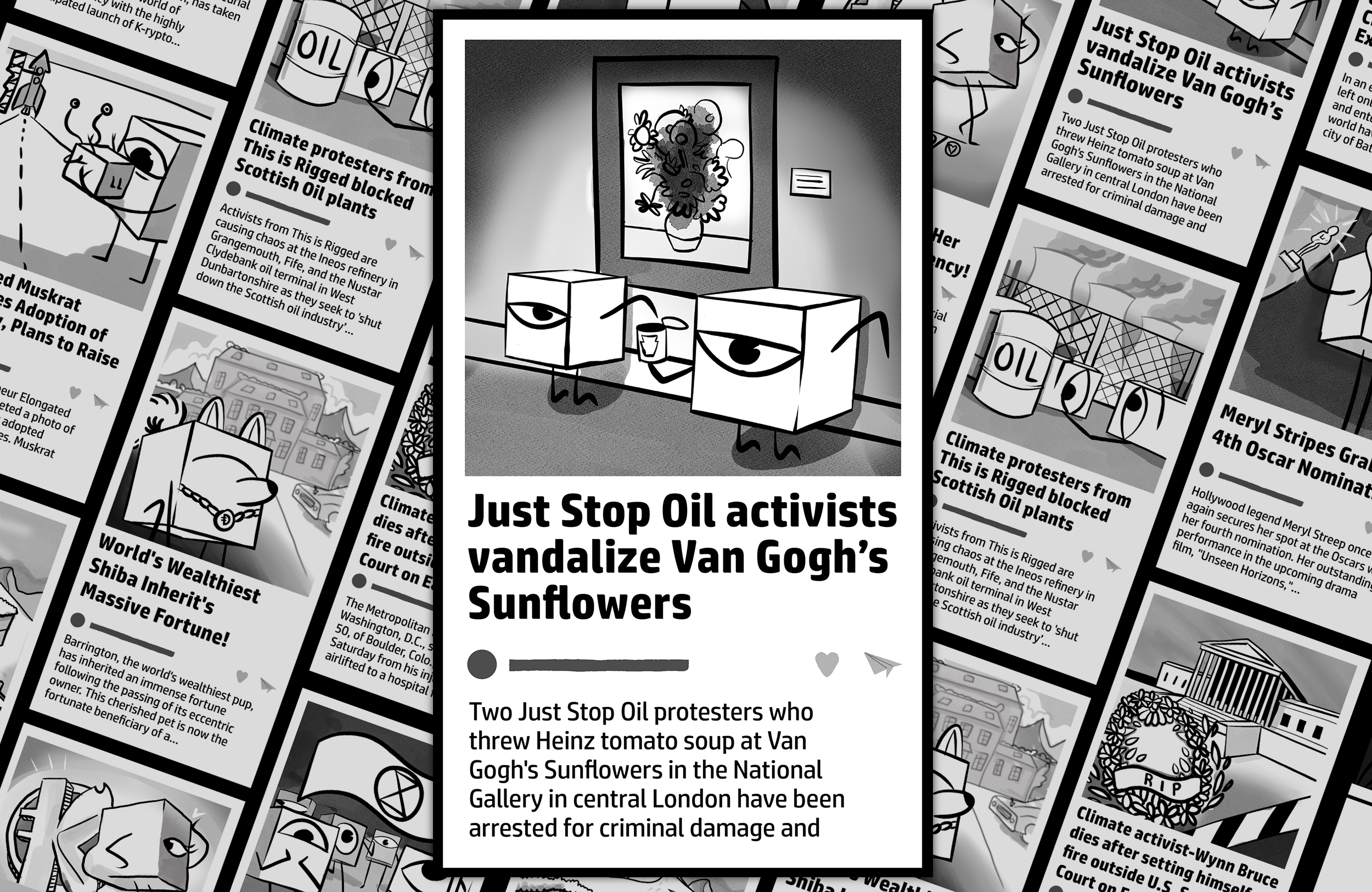
The Inspiration – It All Started With A Can of Soup
The climate protest that took place at the National Gallery in October 2022 was one of the biggest inspirations for creating ‘Focus, But Where?’ Remember when two JSO members made headlines by splashing tomato soup over Van Gogh’s Sunflowers, inspiring a trend of “attacks” on valuable artworks by different climate groups, sparking a whirlwind of online drama?
There were heated debates around the protestors’ controversial tactics … While critics argued that disrupting public life is unacceptable and counterproductive, supporters claimed that pissing people off is exactly the point – radical movements like this are not meant to make sense, but to keep people enraged and engaged, putting climate action under the spotlight of public discussion … Countless sensational media reports also added to the confusion … For example, many news articles portrayed the incident as “vandalization,” leading readers to believe the painting was damaged, when in fact the painting was protected by safety glass, a fact the activists were well aware of… Not to mention the controversy on how the campaign was backed by oil companies all along …
But instead of concentrating on the protesters’ eye-catching tactics, or blaming the media for prioritizing clicks and profits from inciting outrage, and the millions of onlookers (including us) who are constantly scrolling their phones for distraction. We want to gain some clarity on the negative cycle of digital consumption that we all contribute to, and ask: Are there any practical ways for us creatives to improve our mode of climate communication?
But where should we start? We can’t tell all the climate activists to stop splashing liquids on famous artworks since it is extremely difficult to measure the long-term effects of radical protests, especially in regard to climate change, where scientific research is consistently influenced by political agendas and corporate interests. We also can’t force the media to uphold the integrity of journalism when the algorithm developed by tech companies doesn’t tend to reward the most accurate and nuanced opinions.
What we could do is address the social and psychological aspects of climate action by promoting digital literacy and a deeper empathy for all parties involved through interactive storytelling. After all, there’s a deep link between our physical and virtual world, and it is impossible for us to push radical changes in our natural environment without transforming the digital landscape we inhabit.
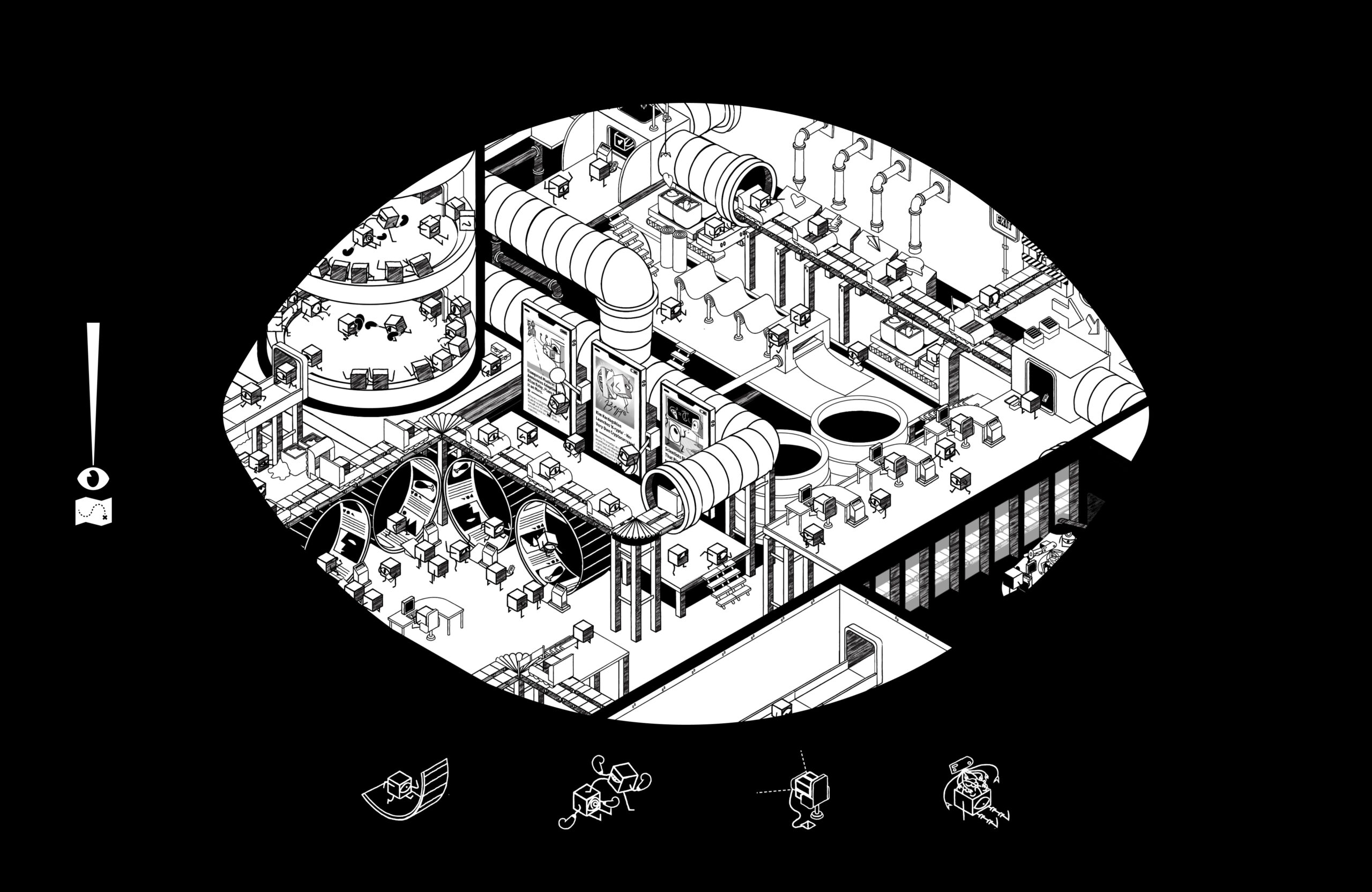
Gameplay Mechanics
In terms of gameplay mechanics, the game follows the classic hidden object genre. Players explore various scenes, uncover hidden objects relevant to climate change, and collect them in their inventory. This inventory then grants access to educational content and references on specific climate-related issues.
This project leverages the game engine phaser.io and TensorFlow face landmark detection framework. We offer two interaction modes: standard cursor-based navigation and a hands-free option that enables players to use their gaze to navigate the game and trigger interactive animations through eye movements like blinking and staring. This innovative gameplay experience underscores a key element of our narratives—the dynamics of attention, distraction, focus, and changes in perspective surrounding environmental issues.
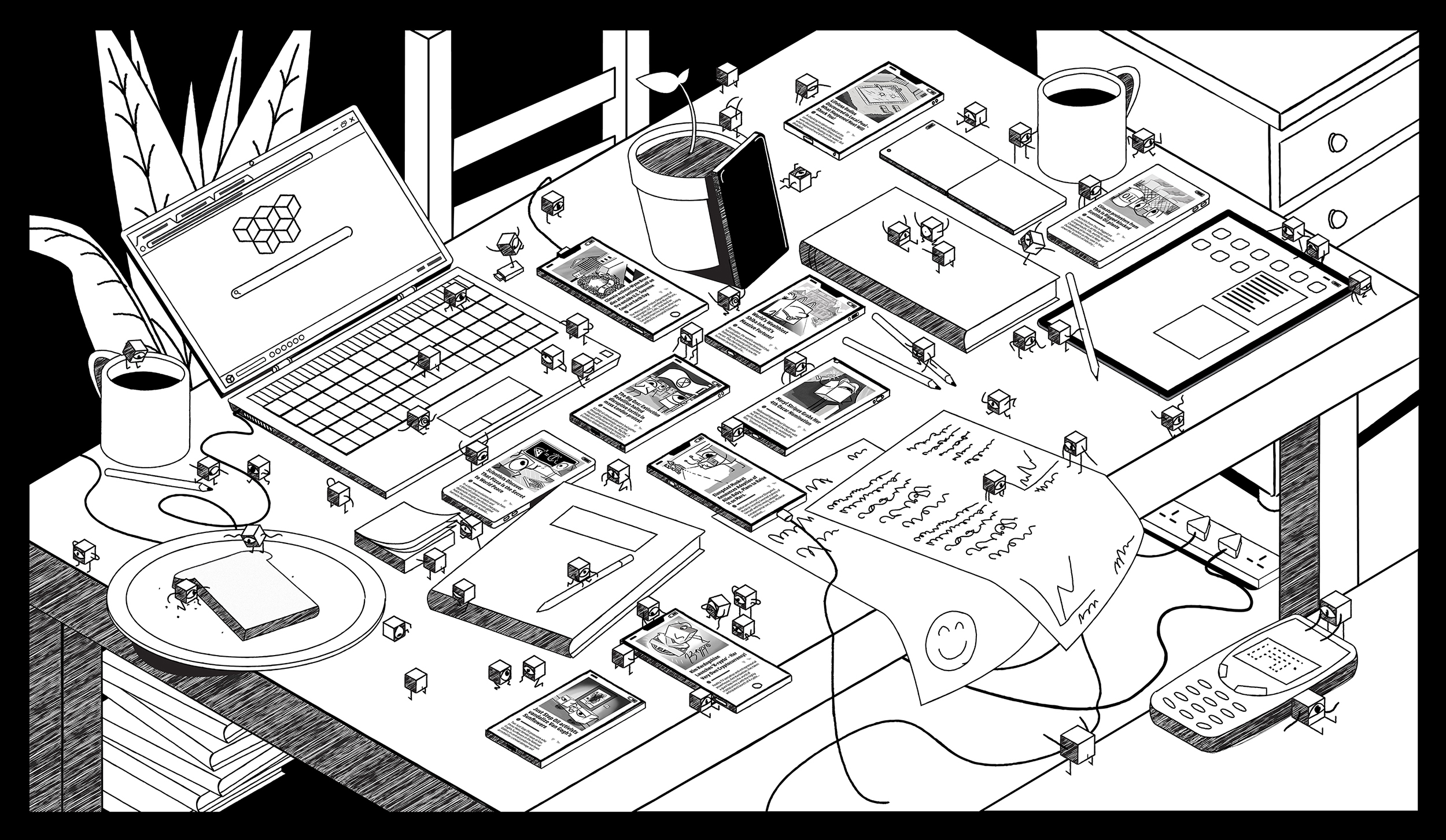
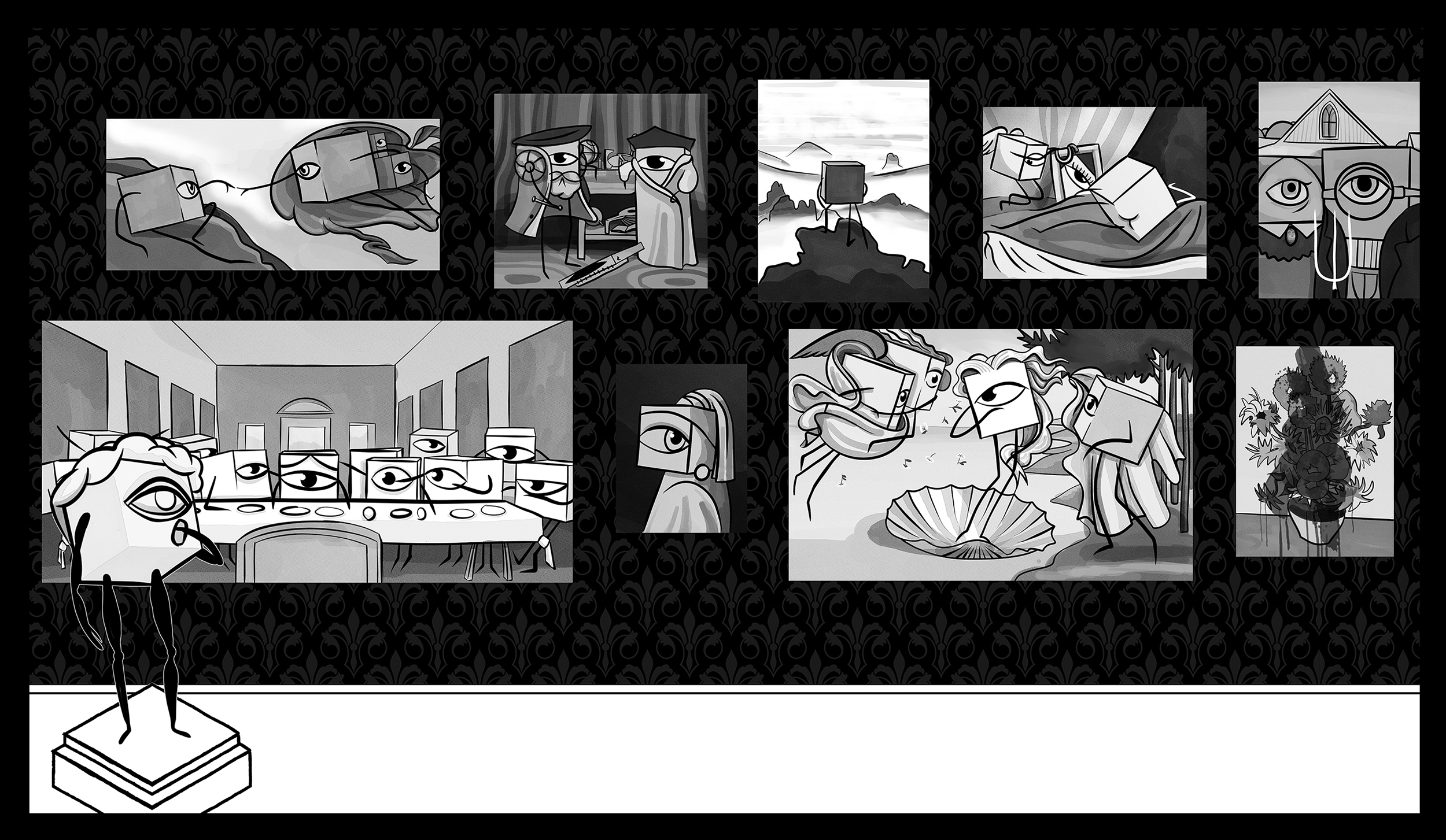
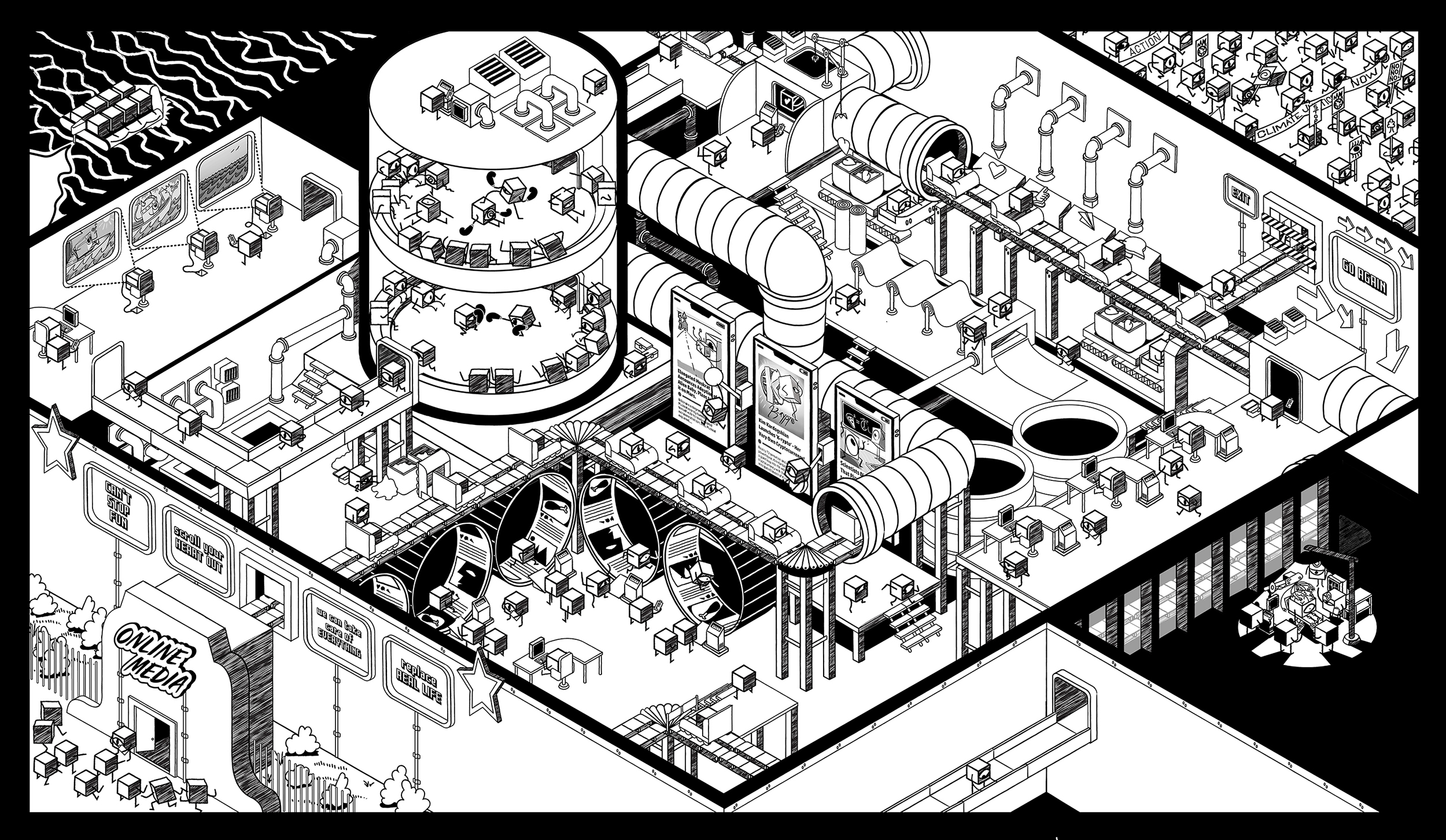
Game Narratives
Chapter 1: Lost in The Flood
In this opening chapter, we highlight how important issues like climate change are often drowned out by attention-grabbing but inconsequential tabloid entertainment news. In this instance, we ask our player to spot the three climate-related articles amid this flood of digital content with the visual clues we give out.
Chapter 2: The Soup and Van Gogh
The second chapter focuses on a famous climate protest: the Van Gogh soup protest. By analysing the initial public response, examining the protest’s portrayal in the media, and drawing from historical instances of radical protests, we aim to uncover reasoning behind the protest, its impact on the national discourse, and the attention it garnered across the media landscape. In one section, we explore the omission by the media of the fact that the painting was protected by safety glass, a fact the activists were aware of. This omission drove much of the rage directed at activists, at the same time, without it, the story would have been unlikely to gather the attention it received.
Chapter 3: Addict Factory
Chapter two naturally leads to the question of why? Why is our digital landscape such that only an act such as the Van Gogh protest breaks through for more than a moment? This chapter seeks to answer that question. We illustrate how our online world contributes to echo chambers, extremism, and addiction, touching on manipulative UX/UI designs crafted by tech companies, the attention economy that dominates discourse and the commodification of human weaknesses, turning us into products rather than customers.
Chapter 4: The Spiders in The Attic
The Spiders in the attic focus on the influence of lobbying bodies and the ultra-wealthy on the media we consume. In particular, it discusses the demonisation of activists and the normalisation of violence, both from the public and the police, against them. It presents the interconnection of lobbying bodies, politicians, and press through the imagery of spiders languishing in a dusted attic, each spider revealing another layer of influence.
Chapter 5: Zooming Out of Our Paper House
In the final chapter, we zoom out from the media landscape the game has navigated throughout its run to witness the future that looms if we fail to act. Flood water rises to consume a city, paper houses dissolving into a wall of water. Players explore their city decades into the future to search for tangible local effects of the potential breakdown of climate systems with a 4°C (7.2°F) rise in global temperatures by the end of the century. By studying scientific predictions and translating them into tangible imagery anchored in specific, recognizable locations within a familiar city, we aim to illustrate a graspable future for the player that could potentially be prevented from happening.
CTA: A Note of Hope
In the final section, we will give out our reasoning on creating this game and useful resources to encourage the player to take some form of action to push back against the escalating climate catastrophe, calling for hope and action rather than division and doom.
Credits
“Focus, But Where?”’s initial narrative and concept design were created during Kexin Liu’s Research Residency at Watershed’s Pervasive Media Studio (01/02/2023 – 13/04/2023) and were further developed with the generous support of Grounding Technologies (01/08/2023 – 01/12/2023), funded by the Arts and Humanities Research Council, and Department for Media, Culture and Sport.
Its latest game prototype was supported by Grand Fund (Spring 2024 round) and Culture West Creative Freelancer Grant (10/2024), awarded by the West of England Combined Authority.
Project team:
Kexin Liu – project director, art director, writer
Kai Charles – researcher & writer
Inigo Hartas – illustrator
Xingzhi Zheng – game designer & programmer
Jake Wild – sound designer
Jiashun Wu – programmer
Showcase History
Showcased at Game Transformed 2024 with developer’s talk, pelican house, London, 22/06/2024.
Showcased at IMPACT! Indie Games 2024, Strange Brew, Bristol, 23/05/2024.
Talk at Grounding Technologies Programme Sharing, Watershed, Bristol, 01/12/2023.
Press History
Latest game review Attention Economy Meets Climate Action: The Innovative World of ‘Focus, But Where?’, written by Unveilral, on Artist Responding To … 12/07/2024.
This project is also featured in Julie’s Bicycle and Bristol 24/7.